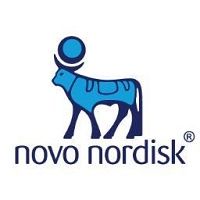Article
FDA Advisory Committee Recommends Semaglutide
Author(s):
The FDA advisory committee voted 16-0 in favor semaglutide's approval.

In a meeting of the US Food and Drug Administration’s (FDA) Endocrinologic and Metabolic Drugs advisory committee, the group voted in favor of approval for the once-weekly injection semaglutide, 16-0 (with 1 abstention), for improved glycemic control in adults with type 2 diabetes (T2D).
The Novo Nordisk product, intended to improve the company’s competition with Eli Lilly’s dulaglutide (Trulicity), is a longer-acting version of the successful liraglutide (Victoza), which was approved for the additional indication of lowering cardiovascular risk in August 2017. An oral form of semaglutide is also being developed by Novo Nordisk.
A 2016 study, SUSTAIN 6, showed semaglutide is associated with a 26% reduction in cardiovascular risk when compared with placebo.
In documents published on October 16, the advisory committee stated that it “supports the claim” that semaglutide improves glucose control in patients with T2D. Although it noted that the number of patients that developed issues with sight did increase, it stated that there was “no reason to restrict semaglutide with respect to population or dosing schedule.”
Semaglutide was compared to dulaglutide in a randomized trial, SUSTAIN 7, in low (0.5 mg semaglutide vs. 0.75 mg dulaglutide) and high (1.0 semaglutide vs. 1.5 mg dulaglutide) doses. Novo Nordisk’s glucagon-like peptide-1 receptor (GLP-1) cut the hemoglobin A1C (HbA1C) of patients by 1.5% compared with 1.1% by dulaglutide at the low dose, and 1.8% compared with 1.4% at the high dose.
In the semaglutide low dose arm, 69% of patients met the ≤7.0% HbA1C target goal compared to 52% in the dulaglutide low dose arm. At the higher dose, 79% of patients met goal with semaglutide compared to 68% with dulaglutide.
“In all the key efficacy trials, both doses of semaglutide also demonstrated superiority to placebo and the active comparators in terms of change in body weight from baseline,” the FDA preliminary documents state. “In the CVOT, both doses of semaglutide demonstrated superiority to placebo in terms of change in HbA1c and body weight at Week 104 as well as change in HbA1c at Week 30 for subjects on premix insulin at baseline and for subjects on [sulfonylurea] monotherapy at baseline, although change in HbA1c at Week 104 was not a prespecified secondary endpoint.”
The FDA is expected to make its decision on the drug on December 5, 2017.





